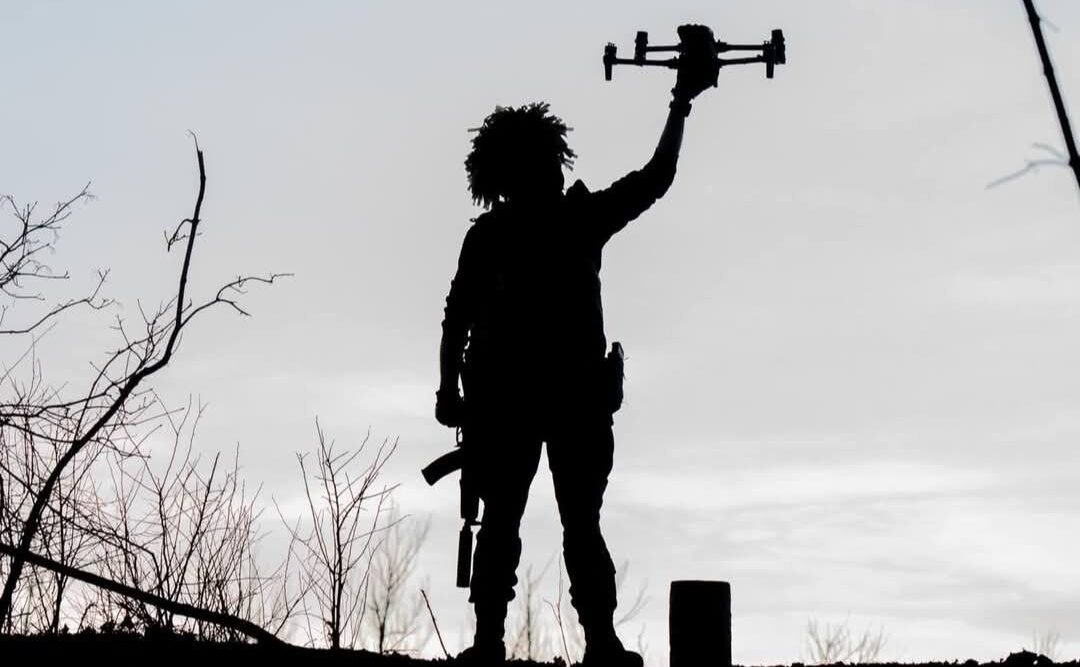On 10 February, Ukraine’s Defense Ministry announced the launch of the Drone Line project, an initiative designed to integrate unmanned aerial vehicles (UAVs) with infantry operations, creating 10-15 km kill zones. The project aims to enhance battlefield efficiency by combining elite drone regiments with ground units.
Drone warfare innovations have become a hallmark of the ongoing Russo-Ukrainian war, with unmanned vehicles of various sizes operating across air, land, and sea. Rapid advancements are shaping both technology and evolving battlefield tactics, as well as transforming military structures on both sides.
According to Ukrainian Defense Minister Rustem Umierov,
"This is a new standard of warfare, where unmanned systems become a key element of combat operations, helping our defenders and defendresses carry out the most complex tasks. We are focusing on the best UAV units," he wrote.
He emphasized that the initiative will "significantly enhance" the Ukrainian brigades by leveraging the most effective UAV systems in the military and border guard service.
The program’s first stage includes five elite units:
- 20th separate regiment "K-2"
- 429th regiment "Achilles"
- 427th regiment "RAROG"
- 414th brigade "Birds of Magyar"
- "Phoenix" regiment of the Border Guard brigade Pomsta
Tactical innovations and drone-infantry coordination
The Drone Line project integrates UAVs with infantry to form a unified strike system. This setup aims to:
- establish 10-15 km kill zones where Russian forces cannot move without suffering heavy losses.
- provide continuous aerial support and protection for friendly infantry units.
- detect and eliminate enemy positions before they approach Ukrainian defenses.
Umierov stated that this initiative will "fundamentally change combat tactics," giving Ukrainian forces a decisive advantage on the battlefield.
Commenting on Umoerov's announcement, the Institute for the Study of War (ISW) wrote
:
"This project likely formalizes and provides additional support to ongoing Ukrainian efforts to expand drone units and increase their coordination with regiments and brigades, while keeping regular units and drone units separate in order to support drone units' more rapid combat and technological adaptations and innovations."
Ukraine's drone expansion compared to Russia’s centralization
The ISW noted that Ukraine’s efforts to integrate drone operations contrast sharply with Russia’s centralization approach. While Ukraine expands UAV operations by integrating drone units with combat regiments, Russia has moved to bureaucratically centralize drone forces, limiting rapid innovation and adaptation.
According to ISW, the Russian Ministry of Defense began consolidating drone detachments in late 2024, forming a regiment-level structure under military district control. This process, which disbanded informal Russian drone teams, is seen as potentially slowing technological advancements and battlefield effectiveness in the short-to-medium term.
"ISW continues to assess that the Russian MoD's efforts to centralize and reorganize drone units and monopolize drone production and procurement processes may complicate Russian forces' ability to rapidly innovate and adapt new technologies and combat techniques in the short- to medium-term," ISW said.
Ukraine now receives 200,000 drones per month
On 9 February, Ukraine’s First Deputy Defense Minister Ivan Havryliuk stated that Ukraine now receives approximately 200,000 UAVs monthly. The expansion of FPV drones and other unmanned systems has significantly boosted the combat capabilities of Ukrainian forces.
"In early 2024, we were acquiring 20,000 drones per month. Today, that number has risen to around 200,000 and is still growing," Havryliuk said.
In addition to most-used disposable FPV kamikaze drones, Ukraine has secured various UAV systems through international aid. The Defense Ministry has also prioritized introducing robotic ground systems - land drones - for logistics, demining, and casualty evacuation, reducing risks for soldiers operating in open terrain.
By the end of 2024, the ministry had contracted 1.6 million drones of different types, worth over 114 billion UAH, according to Militarnyi. These included long-range UAVs, FPV kamikaze drones, reconnaissance drones, and attack copters, significantly enhancing Ukraine’s drone warfare capabilities.
Related:
- Lithuania’s Radarom! campaign raises € 1 million to supply Ukraine with drones in one week
- Ukraine deploys 200,000 drones monthly to counter 5-to-1 Russian infantry advantage near Pokrovsk, WSJ reports
- Ukraine aims for AI supremacy through production of drone swarms tech and battlefield analytics
- UK “rapidly developed” new naval drones for Ukraine
- Ukrainian robotic grenade-launcher turret enters serial production
- Russia equips decoy Gerbera drones with explosive payloads
- Commander-in-chief announces major reorganization of Ukrainian military structure
- Russia’s fiber-optic drones dodge jamming, but Ukraine hunts them with infrared and sound
- Rada approves Ukraine’s new military branch for unmanned technologies

